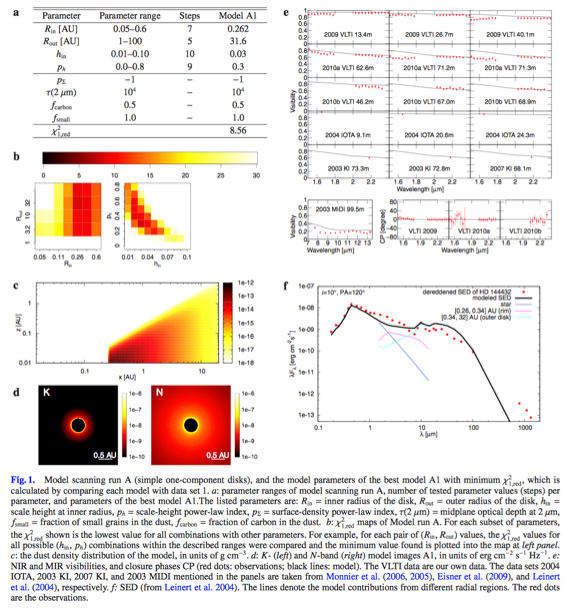by Chen, L.; Kreplin, A.; Weigelt, G.; Hofmann, K.-H.; Schertl, D.; Malbet, F.; Massi, F.; Petrov, R.; Stee, Ph., 2016, A&A, 586, 54C
Studies of pre-transitional disks, with a gap region between the inner near-infrared-emitting region and the outer disk, are important to improving our understanding of disk evolution and planet formation.Previous infrared interferometric observations have shown hints of a gap region in the protoplanetary disk around the Herbig Ae star HD 144432.
We study the dust distribution around this star with two-dimensional radiative transfer modeling.
We compare the model predictions obtained via the Monte-Carlo radiative transfer code RADMC-3D with infrared interferometric observations and the spectral energy distribution of HD 144432.
The best-fit model that we found consists of an inner optically thin component at 0.21-0.32 AU and an optically thick outer disk at 1.4-10 AU. We also found an alternative model in which the inner sub-AU region consists of an optically thin and an optically thick component.
Our modeling suggests an optically thin component exists in the inner sub-AU region, although an optically thick component may coexist in the same region. Our modeling also suggests a gap-like discontinuity in the disk of HD 144432. Based on observations made with ESO telescopes at Paranal Observatory under program ID 083.D-0224(C) and 085.C-0126(A).
